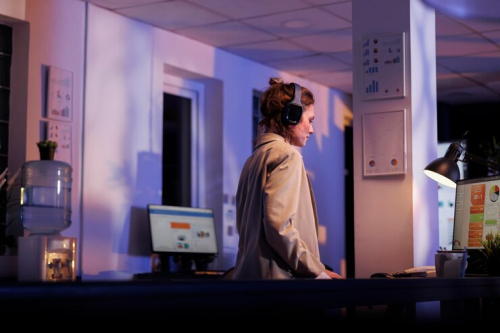Quick Listen:
Picture a hectic Saturday evening at a popular downtown eatery. The queue stretches down the block, diners glance impatiently at their watches, and inside, the host grapples with a paper waitlist and a chaotic reservation book. This high-pressure scenario, long a hallmark of the restaurant industry, is being transformed by table management software. These advanced tools are not merely about assigning seats; they’re about slashing wait times, enhancing operational efficiency, and delivering exceptional guest experiences in an age where speed and personalization reign supreme.
The restaurant industry is fiercely competitive, and the demand for seamless service has never been higher. According to a 2024 report, the global restaurant management software market was valued at $3.45 billion and is expected to surge to $8.58 billion by 2032, driven by a robust compound annual growth rate (CAGR) of 13.30% from 2026 to 2032. Table management systems, a critical component of this market, are leading the charge by optimizing reservations, seating algorithms, and guest flow, enabling restaurants from bustling bistros to upscale dining venues to thrive during peak hours.
The Technology Powering the Transformation
Modern table management software transcends the traditional hostess stand. These cloud-based platforms integrate seamlessly with point-of-sale (POS) systems, reservation platforms like OpenTable or Resy, and customer relationship management (CRM) tools, creating a digital command center for the dining room. Beyond tracking available tables, they forecast guest flow, optimize seating layouts, and deliver real-time updates to diners via SMS or mobile apps. A 2025 projection estimates the restaurant management software market at $6.54 billion, with an anticipated rise to $12.93 billion by 2030, fueled by a CAGR of 14.59%.
In North America, the market is particularly robust, generating $1.9028 billion in revenue in 2024 and projected to grow at a CAGR of 14.5% through 2030, with table and delivery management tools driving significant gains. Artificial intelligence (AI) is a key catalyst, with algorithms analyzing historical data such as party sizes, dining durations, and peak hours to recommend optimal seating arrangements. For example, a lively pizzeria might leverage predictive seating to turn tables faster without rushing guests, ensuring a smooth yet efficient dining experience.
Cloud-based systems enable managers to monitor floor plans in real time, adjusting staff or table assignments during unexpected surges. Post-pandemic innovations, such as touchless check-ins and digital waitlists, have become industry standards, minimizing bottlenecks at the entrance. Diners receive a text when their table is ready, allowing them to relax at the bar rather than crowding the host stand. These advancements collectively enhance efficiency and elevate the guest experience.
Market Insight: The cloud-based segment of the restaurant management software market led with $2.4333 billion in revenue in 2021 and is projected to reach $11.1097 billion by 2031, growing at a CAGR of 16.7% .
Real-World Impact: Restaurants in Action
Across diverse dining environments, table management software is delivering measurable results. Some restaurant chains have implemented tablet-based systems that significantly reduced average wait times. By synchronizing reservations, walk-ins, and server availability, these systems ensured tables were filled promptly. Hosts transitioned from scribbling on paper to tapping screens, while managers leveraged real-time analytics to optimize staffing during busy shifts.
In fine dining, the technology shines just as brightly. Some upscale restaurants have adopted AI-driven tools that match guest preferences with table layouts. Large groups were directed to spacious booths, while couples enjoyed intimate window seats. This personalization accelerated table turnover without sacrificing the relaxed ambiance essential to fine dining. By incorporating diner feedback, such as preferences for quieter areas, these systems boosted guest satisfaction and earned positive online reviews.
Smaller establishments are also reaping rewards. Some local eateries have integrated their table management software with guest notification systems. When tables became available, diners received instant texts, keeping the line moving and reducing wait times. The software also identified VIPs and regulars, enabling staff to offer personalized gestures, such as complimentary starters, fostering loyalty in a competitive market.
Challenges of Digital Adoption
Despite their transformative potential, table management systems face obstacles. Staff accustomed to manual methods may resist the transition to digital platforms. Some restaurant teams have expressed concerns that technology could impersonalize their roles. Comprehensive training can mitigate these concerns, but the adjustment period often presents challenges. Integration issues also pose problems, particularly when legacy POS systems in older restaurants fail to sync with modern software, resulting in operational glitches.
Cost is another barrier. The restaurant management software market was valued at $4.2364 billion in 2021, with cloud-based solutions accounting for $2.4333 billion. By 2031, the cloud segment is expected to reach $11.1097 billion, growing at a CAGR of 16.7%, while on-premise systems are projected to hit $6.0042 billion at a CAGR of 13.1%. However, for small restaurants, the initial investment in software, hardware, and training can be prohibitive, especially when traditional methods seem adequate.
Privacy concerns further complicate adoption. Guests may hesitate to share contact information for SMS alerts, citing fears of data breaches. Additionally, over-reliance on technology carries risks. Some restaurants have experienced system crashes during power outages, forcing staff to revert to manual seating. Without adequate training, even the most advanced software can become a liability. Nevertheless, these hurdles have not deterred widespread adoption, as restaurants recognize the cost of lagging in a dynamic industry.
The Rewards: Efficiency and Guest Satisfaction
When implemented effectively, table management software yields significant benefits. Increased table turnover directly boosts revenue by accommodating more guests. Integrated systems, such as kitchen display systems (KDS), replace paper tickets, streamlining communication between front-of-house and back-of-house teams and accelerating service. Managers gain actionable insights, enabling rapid adjustments to floor plans or staffing during high-traffic periods.
Guests also reap the rewards. Shorter wait times, transparent updates, and tailored seating arrangements create a sense of attentiveness that fosters loyalty. Some surveys have indicated that diners are more likely to return to restaurants with efficient waitlist systems, a critical advantage in an industry with tight margins. These improvements translate to fuller dining rooms and stronger bottom lines.
The Future of Dining
The evolution of table management software shows no signs of slowing. Industry experts anticipate deeper integration with CRM and loyalty programs, enabling restaurants to customize experiences based on guest history. Imagine a system that reserves your preferred table and pre-orders your favorite drink upon check-in. Voice-enabled tools, currently in trial phases, could allow hosts to manage waitlists hands-free during peak hours. Predictive analytics will further refine demand forecasting, optimizing operations with unprecedented precision.
With the restaurant management software market projected to reach $17.1139 billion by 2031 , restaurants that adopt these technologies are not merely keeping pace they’re defining the future of dining. For guests weary of long waits and frazzled hosts, this technological shift is a welcome change. The next time you’re promptly seated at your favorite restaurant, the software behind the scenes deserves the credit. It’s not just technology it’s the new standard for exceptional dining experiences.
Disclaimer: The above helpful resources content contains personal opinions and experiences. The information provided is for general knowledge and does not constitute professional advice.
You may also be interested in: Restaurant Waitlist App | Restaurant Reservation System
Scattered systems and manual processes erode your restaurant’s margins daily. Milagro unifies POS, digital menus, online ordering, staffing, loyalty, and AI-powered marketing into one platform, slashing costs and enhancing guest loyalty. Reclaim control over operations and drive revenue growth. Streamline your workflow and elevate profitability. Schedule your Milagro demo today!
Powered by flareAI.






